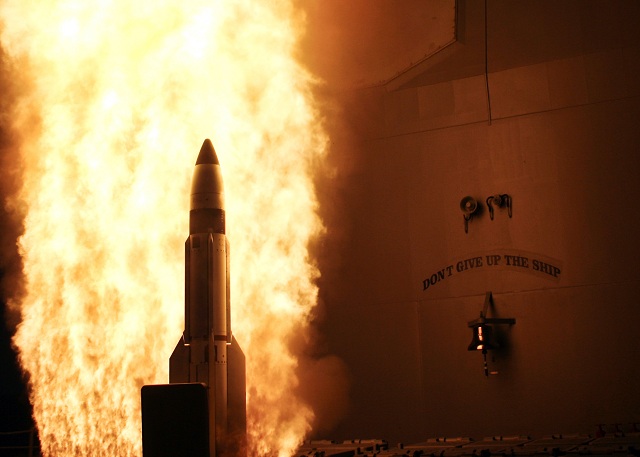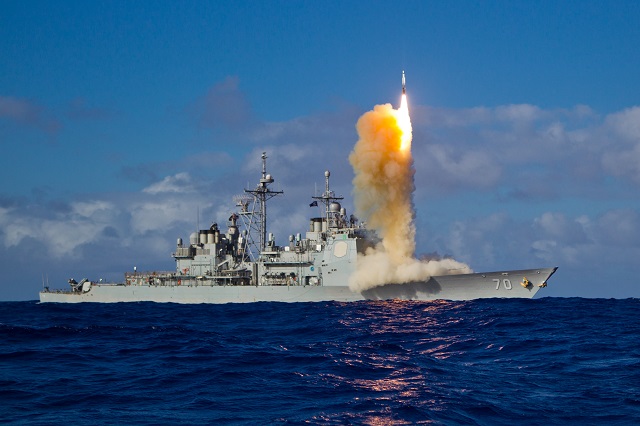|
|
| a |
Defense
Industry News - USA |
| |
|
| |
| |
Threat Upgrade to Raytheon SM-3 Missile Software Brings New Ballistic
Missile Defense Capability |
| |
For the first time ever, Raytheon has begun enhancing Standard Missile-3
Block IBs with 'threat upgrade' software, giving the weapon's kill vehicle
the ability to hunt down more complicated, more lethal targets. Though
exact details are classified, the ability to make improvements through
software upgrades means combatant commanders can get increased ballistic
missile defense capabilities without the time and expense associated
with traditional disassembly or hardware replacement. |
|

A SM-3 Launches from USS Lake Erie during a test
(File Picture: US Navy)
|
|
"We're
proving it's possible to significantly improve the SM-3 Block IB's capability
without having to go through the process of breaking apart the missile
and then rebuilding again," Dr. Mitch Stevison, Standard Missile-3
senior program director. "Software updates are inherently less
risky and extremely cost effective."
The Missile Defense Agency and the U.S. Navy plan to test an SM-3 Block
IB enhanced with the new software in 2015.
The SM-3 Block IB's software updates were performed in Raytheon's Tucson,
Ariz., Space Factory. Final assembly of the SM-3 takes place at Raytheon's
Redstone Missile Integration Facility in Huntsville, Ala. |
|

PACIFIC OCEAN (May 15, 2013) A Standard Missile-3 (SM-3) Block 1B interceptor
missile is launched from the guided-missile cruiser USS Lake Erie (CG
70) during a Missile Defense Agency and U.S. Navy test in the mid-Pacific.
The SM-3 Block 1B successfully intercepted a target missile that had
been launched from the Pacific Missile Range Facility at Barking Sands
in Kauai, Hawaii. Lake Erie detected and tracked the target with its
onboard AN/SPY-1 radar. The event was the third consecutive successful
intercept test of the SM-3 Block IB missile. (U.S. Navy photo/Released)
|
|
About
the Standard Missile-3
SM-3s destroy incoming ballistic missile threats in space using nothing
more than sheer impact, which is equivalent to a 10-ton truck traveling
at 600 mph. The next-generation SM-3 Block IB incorporates an enhanced
two-color infrared seeker and the Throttleable Divert and Attitude Control
System, a mechanism that propels the missile toward incoming targets.
» More than 200 SM-3s have been delivered to the U.S. and Japan
to date.
» Raytheon is on track to deliver the next-generation SM-3 Block
IB in 2015.
» SM-3 Block IIA, co-developed with Japan, will have larger rocket
motors and a bigger, more capable kinetic warhead. It's on track for
deployment at sea and ashore in 2018. |